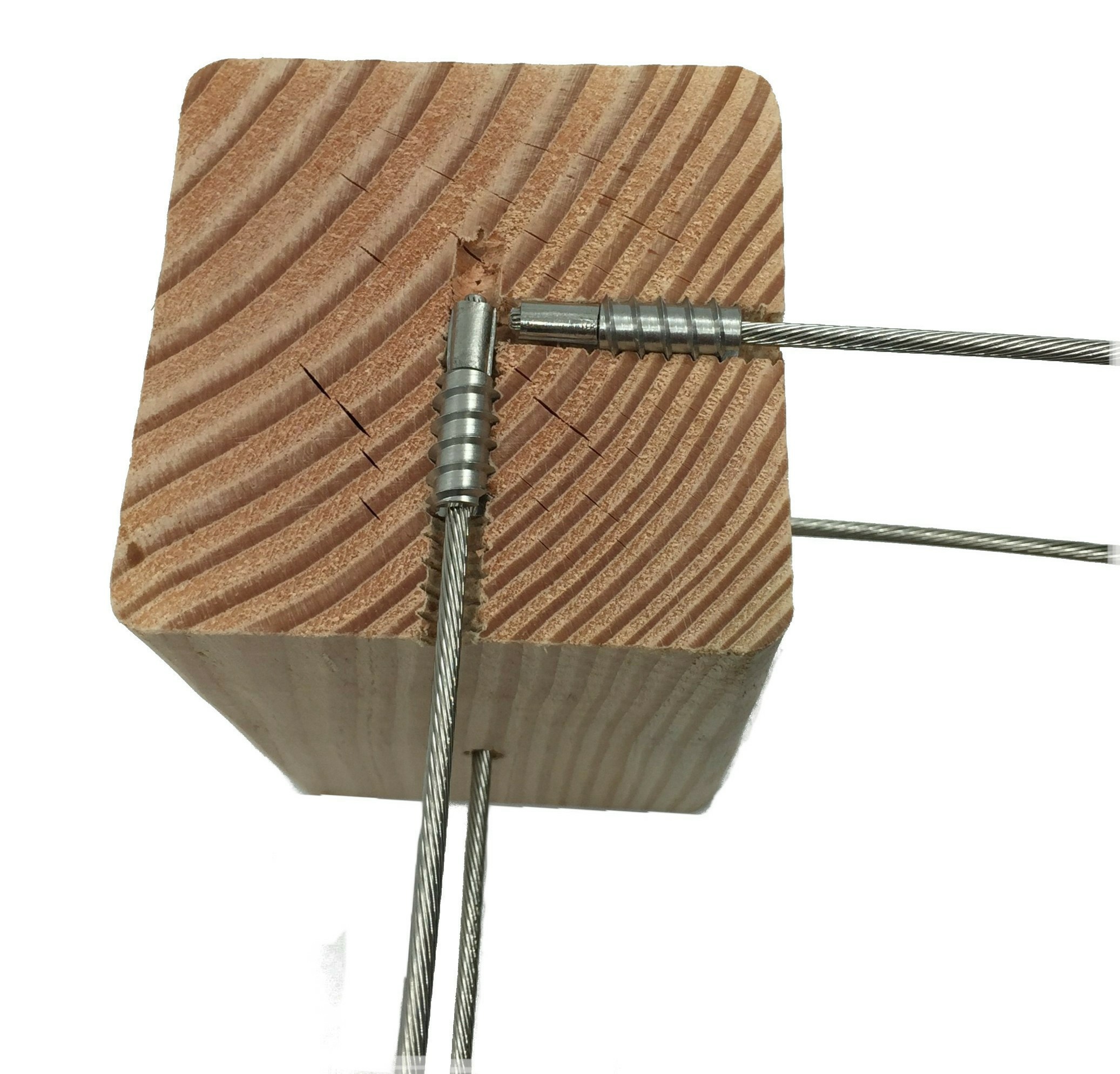SIMPLE DESIGN
All components of the Rattler Railing stud tensioner are located within the post and are completely invisible when installed. Other tensioner designs, such as a long stud or a turnbuckle type tensioner, result in exposed hardware that is not always attractive and may require maintenance. The end of every exposed tensioner fitting may differ in distance from the post due to variations in tensioning each individual cable. Since the Rattler Railing stud tensioner is inside the post, the variations of the final fitting locations are irrelevant as they are completely unseen. If the hardware is exposed, it will eventually need cleaning and will make painting the posts more difficult.
The key to the Rattler Railing stud tensioner is that the threaded stud can rotate independent of the cable. This allows the cable to be tensioned without twisting the cable excessively.
There is an 1 1/2" or more of axial movement of the tensioning stud, which provides plenty of adjustment for tensioning long runs of cable. In the example 4 x 4 post shown below, the cable on the right is used as a fixed end with no room for tension adjustment. This avoids the need to offset one cable slightly above the other, even in a 4 x 4 post. It is assumed that the other end of the cable can be tensioned. A 6x6 corner post has enough room for adequate tensioner travel in both directions.
A major benefit of surface mount type hardware is that it can be used on a post that has no access on the back side. The Rattler Railing stud tensioner shares this advantage, allowing application to a post that is flush with a wall.
SIMPLE INSTALL
Installation is quick and easy:
1) Drill a 17/64" hole into the post.
2) Slip a stud tensioner onto the cable.
3) Swage a ferrule onto the end of the cable.
4) Screw the stud into the post using the installation tool.
That's all there is to the installation of the patented Rattler Railing stud tensioner!

Very Economical
Every cable requires a tensioner on at least one end of the cable. Using the Rattler Railing stud tensioner on both ends provides the most aesthetically pleasing application. However, often a fixed anchor can be used on one of the two ends. A Rattler Railing washer anchor termination on the fixed end is a fraction of the cost of a tensioner type termination and can significantly reduce the total material cost for the cable railing installation.
If there is at least 12 inches of clearance on the back side of the post, the only disadvantage of the washer anchor over the stud tensioner for a fixed end is that there is a 1/2" diameter black nylon plug on the back side of the post as shown below. In most cases this plug is a minor aesthetic drawback. If desired, the plug can be painted to help blend in with the post, or a wood plug could also be used.

